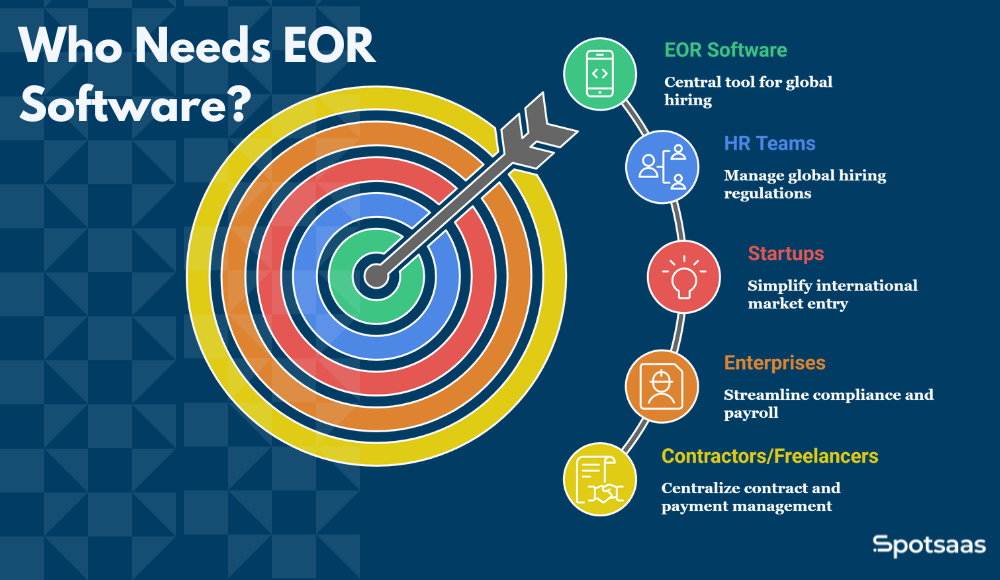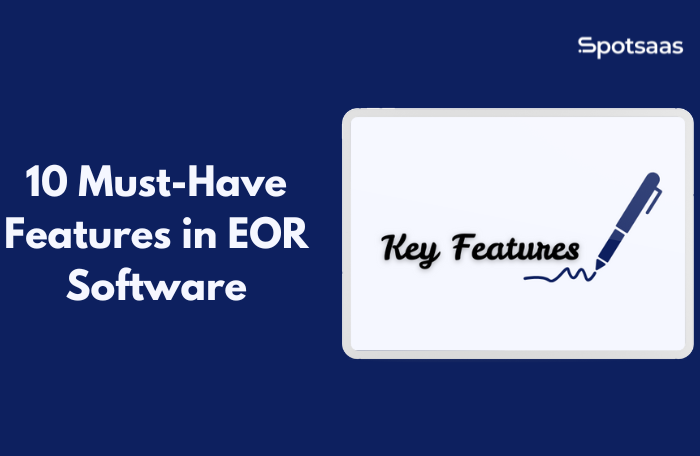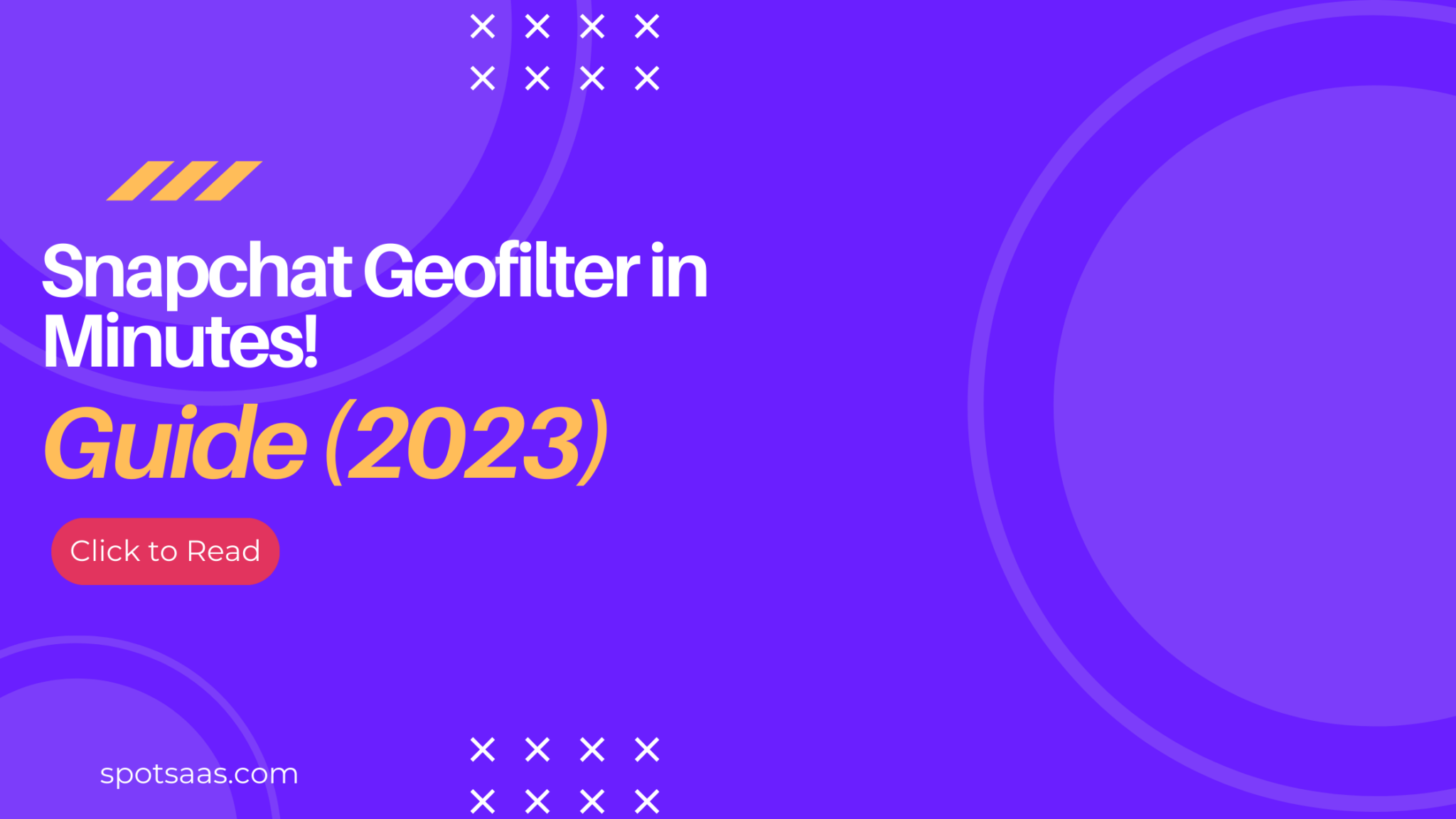EOR software is transforming how businesses hire internationally—no longer just a solution for large enterprises. Startups, mid-sized companies, and fast-growing teams are tapping into global talent pools to scale efficiently and stay competitive.
Whether it’s a remote developer in Eastern Europe or a marketing consultant in Southeast Asia, building an international team is more achievable than ever. But global expansion comes with its complexities. Employment laws vary, payrolls span multiple currencies, and setting up local entities is both costly and time-intensive.
For companies planning to expand in 2025, the right EOR software helps streamline hiring, cut compliance risks, and handle operations smoothly from day one.
Who Needs EOR Software?
If your business is expanding internationally, managing a remote team, or handling global contractors, EOR software is an essential tool to simplify the complexities of compliance, payroll, and legal obligations. With the ability to streamline processes and reduce risks, it’s a game-changer for global hiring.

HR Teams Managing Global Hiring
For HR departments tasked with hiring talent across borders, EOR software helps manage multiple countries’ regulations without the need for local entities. It streamlines onboarding, payroll, benefits, and compliance, enabling HR teams to focus on strategic hiring decisions.
With automated compliance updates and real-time tracking, HR teams can ensure a smooth hiring process while adhering to local labor laws.
Startups Expanding Into New Markets
Startups looking to scale internationally face significant hurdles in setting up legal entities, managing compliance, and paying employees in different countries. EOR software removes these obstacles by allowing startups to hire and onboard talent without the need for costly and time-consuming international setups.
By reducing the administrative burden, startups can focus on building their product and growing their market presence globally.
Want an EOR Software that works well for startups? Check this out.
Enterprises Looking to Simplify Compliance and Payroll in Multiple Countries
Large enterprises often operate in multiple regions, each with its own set of laws and tax regulations. EOR software simplifies compliance and payroll, making it easier to manage global teams without needing a legal entity in every country.
This centralization reduces operational costs and ensures timely, accurate payroll distribution across various regions, minimizing errors and compliance risks.
Contractors or Freelancers Being Managed Centrally
For businesses that work with contractors or freelancers across borders, EOR software provides a centralized system for managing contracts, payments, and compliance. It ensures legal classification and timely payments, making it easy to handle a flexible workforce efficiently.
By using EOR software, companies can maintain clear agreements and compliance without needing to manage complex, separate contracts for each region.
10 Must-Have Features in EOR Software for 2025
As companies expand across borders and build distributed teams, EOR software is becoming a key enabler for global growth. It’s no longer just about hiring—it’s about doing it efficiently, legally, and with minimal friction.
The right EOR solution helps businesses manage international talent, stay compliant with local laws, and handle payroll and benefits without the need to set up entities in every country.
Here are 10 essential features to look for in top EOR software in 2025
| Feature | Why It Matters | Key Benefits |
|---|---|---|
| Global Compliance Automation | Ensures local labor laws and tax regulations are followed. | Reduces legal risk and manual tracking efforts. |
| Multi-Country Payroll Management | Manages payroll across regions with accuracy. | Automates currency conversion, deductions, and payouts. |
| Employee Onboarding & Document Management | Speeds up hiring while ensuring compliance. | Digitally signs contracts and verifies documents securely. |
| Benefits Administration | Supports localized benefits for different regions. | Manages insurance, pension, and leave policies by country. |
| Contractor & Freelancer Management | Handles both full-time and contract hires in one system. | Offers flexible payout and compliance settings for freelancers. |
| Tax Filing & Local Withholding | Ensures accurate reporting and timely payments. | Automates filings and tax deductions based on region. |
| Time & Attendance Integration | Connects working hours with payroll and compliance. | Tracks time, leave, and public holidays across countries. |
| Self-Service Employee Portal | Gives employees access to essential information. | Centralizes payslips, contracts, and benefits in one place. |
| Multi-Entity Support | Useful for businesses operating in multiple countries or regions. | Manages teams under different legal structures in one platform. |
| Data Security & Privacy Compliance | Protects sensitive employee and payroll data. | Ensures alignment with GDPR, SOC2, and local privacy laws. |
1. Global Compliance Automation
Why it matters
When hiring across borders, each country comes with its own set of employment laws, tax regulations, and reporting requirements. Missing even a small detail can lead to penalties or operational delays. Automating compliance ensures your business operates within legal frameworks, no matter where your employees are based.
How it helps
EOR software with built-in compliance automation takes care of the heavy lifting. It keeps track of changing labor laws, calculates accurate tax withholdings, and aligns contracts with local standards—all without manual input. This means your team can onboard international talent faster, with confidence that every legal box is checked.
Look for
- Country-specific employment contract templates
- Automatic legal and tax regulation updates
- Rule-based compliance engines
- Alerts for regulation changes in different markets
2. Multi-Country Payroll Management
Why it matters
Paying employees in different countries isn’t as simple as sending money across borders. Each location has its own currency, tax structure, and payroll schedule. Manual payroll processing in such a setup is time-intensive and prone to errors. Having a centralized system that manages payroll across regions ensures accuracy, timeliness, and consistency.
How it helps
EOR software simplifies multi-country payroll by automating everything from currency conversions to tax deductions and payslip generation. It ensures each employee is paid according to local laws and standards while giving your HR and finance teams a unified view of global payroll operations. This reduces administrative overhead and keeps payment timelines on track.
Look for
- Support for multiple currencies and local payment methods
- Automated tax calculations and withholdings
- Customizable payroll schedules by country
- Country-specific payslip formats
- Integration with time tracking and accounting tools
3. Employee Onboarding & Document Management
Why it matters
First impressions count—especially when hiring across borders. A smooth onboarding experience helps new hires feel confident and ready to contribute from day one. Delays in paperwork or region-specific compliance requirements can slow things down and create confusion for both employees and HR teams.
How it helps
EOR software simplifies global onboarding by centralizing the entire process in one place. It automates document collection, verifies identification, and generates country-compliant contracts with just a few clicks. This removes the need for manual coordination and ensures every step meets local legal standards.
Look for
- E-signature functionality
- Country-specific contract templates
- ID and tax document verification tools
- Secure storage for employment documents
- Automated onboarding workflows for faster processing
4. Benefits Administration
Why it matters
Offering the right benefits isn’t just about compliance—it’s a key part of attracting and retaining talent in different regions. What counts as a standard benefit in one country might be optional or required in another. Managing these variations manually can lead to inconsistencies and added workload.
How it helps
EOR software simplifies benefits administration by offering localized options that align with country-specific laws and employee expectations. It ensures each employee receives the appropriate health coverage, leave entitlements, and social contributions—without HR needing to manage separate systems or rely on local agencies.
Look for
- Built-in support for region-specific benefits (e.g., healthcare, pensions, paid leave)
- Automated enrollment and contribution tracking
- Integration with local insurance providers
- Tools to customize or upgrade benefits per location
- A centralized dashboard for managing benefits by region
5. Contractor & Freelancer Management
Why it matters
Many businesses today rely on a mix of full-time employees, freelancers, and independent contractors—especially in creative, tech, and consulting roles. Managing this blended workforce comes with unique challenges, including contract flexibility, varying payment cycles, and legal classification based on country.
How it helps
EOR software helps manage both contractors and employees in one platform. It allows businesses to create flexible agreements, set up payment schedules, and remain compliant with local labor laws—whether working with a part-time designer or a long-term remote consultant. This centralizes contractor management while reducing manual admin work.
Look for
- Support for contractor classification by region
- Customizable agreements and service contracts
- Flexible payout options (per project, milestone, or hourly)
- Compliance tracking for independent contractors
- Unified view of employees and contractors across countries
6. Tax Filing & Local Withholding
Why it matters
Tax laws differ from country to country, and they’re often updated without much notice. From income tax to social security contributions, staying on top of regional tax obligations is critical for compliance. Manual errors in filing or withholding can cause delays, penalties, or strained relationships with local authorities.
How it helps
EOR software takes the guesswork out of tax filing. It calculates the right withholdings for each employee based on their country’s tax codes and submits the necessary forms to local authorities on time and in the correct format. This helps businesses stay compliant while keeping internal finance teams focused on higher-value tasks.
Look for
- Automated tax calculation by country
- Local withholding setup for each employee
- Regular updates to regional tax rules
- Auto-generated tax reports and filing documents
- Integration with payroll and accounting systems
7. Time & Attendance Integration
Why it matters
Tracking working hours, leave, and holidays across different time zones and labor laws can quickly become complex. Without a reliable system in place, errors in time tracking can impact payroll accuracy, compliance reporting, and employee trust.
How it helps
EOR software that integrates with time and attendance tools creates a seamless flow of data between work hours and payroll. It ensures employees are paid correctly based on their actual time worked, regional holidays, and approved leave—no need for manual calculations or spreadsheet updates.
Look for
- Sync between time tracking and payroll modules
- Local holiday calendars and leave policies
- Configurable work hours and overtime settings
- Real-time attendance monitoring
- Support for hybrid and remote teams
8. Self-Service Employee Portal
Why it matters
International teams often work across time zones, and waiting on HR responses for basic requests can slow down workflows. Giving employees access to their own information—like contracts, payslips, and leave balances—reduces dependency on HR and improves the overall experience.
How it helps
A self-service portal empowers employees to manage their own documents, view pay history, track leave, and access benefits—all in one place. It reduces the number of repetitive requests HR teams receive and gives employees the transparency they expect from modern, digital workplaces.
Look for
- Secure login with multi-language support
- Access to payslips, tax forms, and contracts
- Leave request and tracking functionality
- Real-time updates on benefits and payroll
- Mobile-friendly interface for global access
9. Multi-Entity Support
Why it matters
As companies grow internationally, they often operate under multiple business entities across different countries or regions. Without a centralized way to manage these entities, HR and finance teams can face fragmented processes, duplicate records, and a lack of visibility.
How it helps
EOR software with multi-entity support brings all your global operations into one system. Whether you’re managing regional teams, different subsidiaries, or various legal structures, this feature gives you a unified view while keeping reporting and compliance organized and localized.
Look for
- A centralized dashboard for managing multiple entities
- Country-specific compliance and payroll settings
- Role-based access by entity or region
- Unified reporting across entities
- Clear separation of data for each business unit
10. Data Security & Privacy Compliance
Why it matters
When dealing with international teams, you’re handling sensitive employee data across multiple jurisdictions. From contracts and ID proofs to payroll details, this information must be protected and managed in line with global data protection standards.
How it helps
EOR software with strong data security protocols ensures that personal and financial information is stored securely and handled responsibly. It supports compliance with privacy laws like GDPR, SOC 2, and other region-specific frameworks, giving both employers and employees peace of mind.
Look for
- End-to-end encryption and secure data storage
- GDPR, SOC 2, and region-specific compliance certifications
- Access controls and audit trails
- Regular security updates and penetration testing
- Secure document sharing and retention policies
How These Features Impact Business Outcomes
The right EOR software does more than streamline operations—it directly impacts your business performance. By choosing an EOR platform with the features we’ve discussed, you can achieve the following outcomes:
| Business Outcome | Description |
|---|---|
| Reduce Compliance Risk | Automated compliance management ensures you’re always up-to-date with local laws, minimizing the risk of penalties and legal issues when hiring internationally. |
| Save HR Hours | Automating onboarding, payroll, and benefits administration allows HR teams to focus on strategic work, instead of manual data entry and regulatory checks. |
| Speed Up Hiring Timelines | By handling documentation and compliance automatically, EOR software accelerates the hiring process, allowing you to onboard talent faster from anywhere. |
| Enhance Employee Satisfaction Globally | A seamless onboarding process and access to local benefits create a positive employee experience, contributing to higher satisfaction and retention rates. |
- Reduce compliance risk: Automated compliance management ensures you’re always up-to-date with local laws, minimizing the risk of penalties and legal issues when hiring internationally.
- Save HR hours: By automating tasks like onboarding, payroll, and benefits administration, HR teams can focus on strategic work instead of manual data entry and complex regulatory checks.
- Speed up hiring timelines: EOR software speeds up the hiring process by handling documentation and compliance automatically, allowing you to onboard talent faster, no matter where they’re located.
- Enhance employee satisfaction globally: A seamless, efficient onboarding process and access to benefits in line with local expectations help create a positive employee experience, contributing to higher satisfaction and retention.
These outcomes create a strong foundation for global expansion, enabling your business to hire the best talent, reduce administrative overhead, and stay ahead of the competition.
What to Consider When Choosing EOR Software
Choosing the best EOR software is critical for managing global hiring and compliance efficiently. As you compare different solutions, here are key factors to keep in mind:
| Factor | What to Look For |
|---|---|
| 🌍 Coverage of Countries | Ensure the software supports the countries where you plan to hire. |
| 💰 Transparent Pricing | Look for clear pricing models (flat fee or percentage). |
| 📞 Customer Support | Check for 24/7 support with multilingual and regional expertise. |
| 🔗 System Integration | Ensure it integrates smoothly with your existing HR or payroll systems. |
Coverage of Countries You Plan to Hire In
Ensure the software covers the countries where you plan to hire. Some EOR platforms have a limited number of countries, while others provide global coverage, allowing you to expand seamlessly across borders.
Transparent Pricing (Flat Fee vs. Percentage)
Understand the pricing model—whether it’s a flat fee per employee or a percentage of their salary. Clear pricing transparency allows you to forecast expenses without unexpected costs accurately.
Customer Support Quality and Availability
Look for a provider that offers robust customer support, ideally 24/7. Ensure the support team is responsive and knowledgeable, offering assistance in multiple languages and regions to address local hiring challenges.
Integration with Your Existing HR or Payroll Systems
Before choosing a provider, check whether you can easily integrate EOR software with your existing HR, payroll, and accounting tools. A smooth integration reduces manual effort, improves data accuracy, and helps you manage global operations more efficiently from a single source of truth.
Creating a detailed comparison checklist across these areas will help you confidently select a platform that fits your needs today and supports your growth tomorrow.
Conclusion
Choosing the right EOR software is a crucial step for businesses looking to expand globally and manage a diverse, remote workforce. By focusing on key features such as global compliance, payroll management, seamless integration, and customer support, businesses can ensure smooth operations and reduce the complexities of international hiring.
With the right EOR solution in place, companies can scale quickly, minimize risks, and provide a seamless experience for both HR teams and employees, empowering growth and success in the global marketplace.
Frequently Asked Questions
What is EOR software?
EOR (Employer of Record) software helps businesses manage global hiring, payroll, compliance, and employee benefits without setting up local entities.
Why should my company use EOR software?
EOR software simplifies international expansion, reduces compliance risks, and speeds up global hiring by automating key HR functions.
Can EOR software handle both employees and contractors?
Yes, most EOR software platforms manage both full-time employees and contractors, ensuring compliance for all types of workers.
Does EOR software support multi-country payroll?
Yes, EOR software automates payroll processing across multiple countries, handling local tax regulations and currency conversions.
Is EOR software secure?
Top EOR software solutions prioritize data security and privacy, complying with global standards like GDPR and offering secure document storage.





